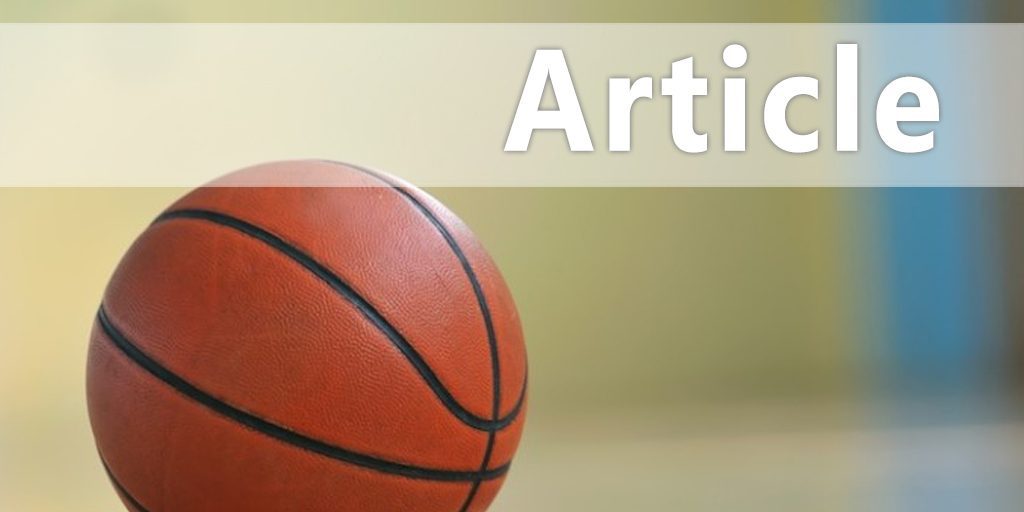| Making Free Throws |
| By: Lee Rose
Originally Published in: Winning Basketball Fundamentals Provided by: Human Kinetics Free-throw shooting is one of the most important strategic points that coaches can convey to their players. Developing and teaching the appropriate method is a test for every coach, and everyone has a favorite procedure. I found that three things must occur for a player to improve and progress when working on free throws: 1. All players must display proper shooting mechanics with balance, grip, aim, release, and follow-through. 2. Players must concentrate. 3. Players must learn to overcome pressure. The first two factors, mechanics and concentration, are relatively easy compared with the third, pressure. Several coaches I observed left it up to the players to practice on their own, others kept daily charts on hits and misses, and still others played games in practice to simulate pressure. It has often been said that if you want to play-whether on your middle school, high school, college, or professional team-you need to be a good free-throw shooter. Every coach should know the importance of having good free-throw shooters in close games; the coach must know the players and which ones are dependable. Some players can hit free throws in the first half or when they are up 20 points with a minute to play, but the question is whether they can hit under pressure. Players can bring many important skills to their team, and when the scored is tied with three minutes to go, being a good free-throw shooter ranks right at the top. Even Dr. James Naismith, the inventor of basketball, must have thought that the free throw was important because originally he assigned 3 points as the value of each made free throw. In addition, it was originally a 20-foot (6 m) shot instead of the 15 feet (4.5 m) that we use today. The past two years of the NCAA tournament, 2010 and 2011, reveal the value of this free and unguarded 15-foot shot. Statistics show that good teams fell by the wayside because of their inability to hit those free and open shots. Table 5.1 reflects those results. No one is exempt from having a poor night at the free-throw line, and when it comes, it appears to be contagious. Take, for instance, the University of Kentucky's game against West Virginia in the 2010 NCAA tournament. Kentucky lost their biggest game of the year by 7, 73-66, while hitting only 55 percent of their free throws. UK missed 13 free throws, hitting just 16 of 29, as their starting guard combo went 5 for 14, missing 9 free throws. The Wildcats followed this up in 2011 with a disappointing 4 of 12 from the free-throw line in losing to Connecticut by 1 point. Even when having an off night, though, a team that has more opportunities at the line has more opportunities to score. As a young coach I attended basketball clinics and listened to the theories of great coaches like John Wooden, Adolph Rupp, and Dean Smith. When asked about his offensive philosophy, Coach Smith said that he wanted to accomplish three things: 1. Score 2. Get fouled and score 3. Get a good shot He said if he had to choose among the three, he would prefer to get fouled while scoring. Scoring the basket and getting a free throw usually comes from a jump shot, a drive to the basket, a post-up, or an offensive put-back. The concept of getting fouled is the reason that many coaches subscribe to the inside-out strategy (meaning that before they shoot an outside jumper, they get the ball inside on the block; then, after they get the ball inside and have no scoring opportunity, they pass it back outside). Table 5.2 shows some teams from the 2009-2010 season that profited greatly by getting to the free-throw line. Look at their free-throw attempts, their free-throw percentages, and their win-loss records; these are definitely inside-out teams. SIX-BASKET FREE THROWS Focus Add a little incentive to hitting those important free throws. Procedure This drill can be used in high schools and colleges where there are six baskets around the court. 1. Split the squad into groups of two and three players and instruct them that each player must make 5 or 10 consecutive shots before moving to the next basket. 2. Each player shoots until he misses; if the shooter doesn't miss, he rotates to the next basket. A miss puts the player at the back of the line. Assistant coaches are assigned baskets to rebound and oversee the process. Reward players for success-perhaps getting to leave practice early-and penalize them for failure-such as having to stay late and complete the cycle. Coaches must be careful when setting a number to make because one or two poor shooters can have problems making even five free throws in a row. TWO-BASKET FREE THROWS Focus Create pressure that helps players concentrate on making free throws. Procedure When a coaching staff has to work with only two baskets, as is usually the case with game-day practice or shoot-arounds, a few different free-throw games can be used. 1. As an alternative to Six-Basket Free Throws, use both ends of the court and split the team into two groups-good shooters and not-so-good shooters-keeping each group at one end of the court. Each player shoots until a miss and then rotates to the end of the line. This method gives the coach the latitude to assign different designated goals. Each player must make 5 or 10 consecutive shots. 2. This drill focuses entirely on individual players. Line up all the players on either side of the free-throw lane and have them all make one with no misses and then make two with no misses. 3. Divide the team into two groups. Put the first team at one basket and the second team at the opposite end. Players then have to make one, followed by two, and then three free throws-all in a row. The reward and punishment in this case is bragging rights reflected in who wins. |






